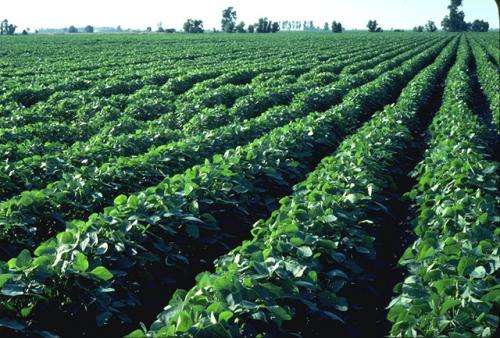Organic agriculture more profitable to farmers, study says

A comprehensive study finds organic agriculture is more profitable for farmers than conventional agriculture.
In spite of lower yields, the global study shows that the profit margins for organic agriculture were significantly greater than conventional agriculture. The results show that there's room for organic agriculture to expand and, with its environmental benefits, to contribute a larger share in feeding the world sustainably. Organic agriculture currently accounts for only one percent of agriculture globally.
The study, published this week in the Proceedings of the National Academy of Sciences, was authored by Washington State University scientists David Crowder and John Reganold.
To be sustainable, organic agriculture must be profitable. That motivated Crowder and Reganold to analyze dozens of studies comparing the financial performance of organic and conventional farming.
"The reason we wanted to look at the economics," said Crowder, an entomologist who studies organic systems, "is that more than anything, that is what really drives the expansion and contraction of organic farming—whether or not farmers can make money. It was kind of surprising that no one had looked at this in a broad sense."
Organic price premiums give farmers an incentive to adopt more sustainable farming practices. The authors suggest that governmental policies could further boost the adoption of organic farming practices and help ease the transition for conventional farmers.
Room to grow
The actual premiums paid to organic farmers ranged from 29 to 32 percent above conventional prices. Even with organic crop yields as much as 18 percent lower than conventional, the breakeven point for organic agriculture was 5 to 7 percent.
"That was a big surprise to me," said Reganold, a soil scientist and organic agriculture specialist. "It means that organic agriculture has room to grow, there's room for premiums to go down over time. But what we've found is that the premiums have held pretty steady over the 40 years represented in the study."
Out of 129 initial studies, 44 met Crowder and Reganold's criteria for inclusion in the meta-analysis of costs, gross returns, benefit/cost ratios, and net present values - a measure that accounts for inflation. The analysis represented 55 crops in 14 countries on five continents. The published article provides the criteria used to select the studies as well as a list of studies that were rejected.
"This is the first large-scale synthesis of economic sustainability of organic farming compared to conventional that we know of," Crowder said. The authors consulted with three agricultural economists to confirm their findings.
Unique to the analysis was the inclusion of yield and economic data for crops grown as part of a rotational system, in addition to data for single crops. The study included profit data for multiple crops grown over several seasons, a more accurate reflection how farmers profit from agriculture.
None of the comparison studies accounted for the environmental costs and benefits of farming. Environmental costs tend to be lower and benefits higher in organic agriculture. But for consumers who believe that organic farming is more environmentally friendly, organic premiums may serve as stand in for the monetary value of such costs and benefits.
Discover the latest in science, tech, and space with over 100,000 subscribers who rely on Phys.org for daily insights. Sign up for our free newsletter and get updates on breakthroughs, innovations, and research that matter—daily or weekly.
Incentive to change
Organic premiums offer a strong incentive for farmers to transition from conventional to organic farming.
"Most growers that we work with, and probably in the United States in particular, do a little bit of organic and lot of conventional," Crowder said. "If they make a little bit of money on that organic acreage they might convert more of their farm."
But farmers converting to organic are in a vulnerable position. The transition period for organic certification exposes farmers to financial risk when their yields drop but they are not yet receiving premiums.
"The challenge facing policymakers," the authors write, "is to develop government policies that support conventional farmers converting to organic and other sustainable systems, especially during the transition period, often the first three years."
As long as environmental degradation, population growth and climate change remain challenges, farming practices that are profitable to farmers while offering additional benefits of sustainability are needed, they said.
More information: Financial competitiveness of organic agriculture on a global scale, www.pnas.org/cgi/doi/10.1073/pnas.1423674112
Journal information: Proceedings of the National Academy of Sciences
Provided by Washington State University


















